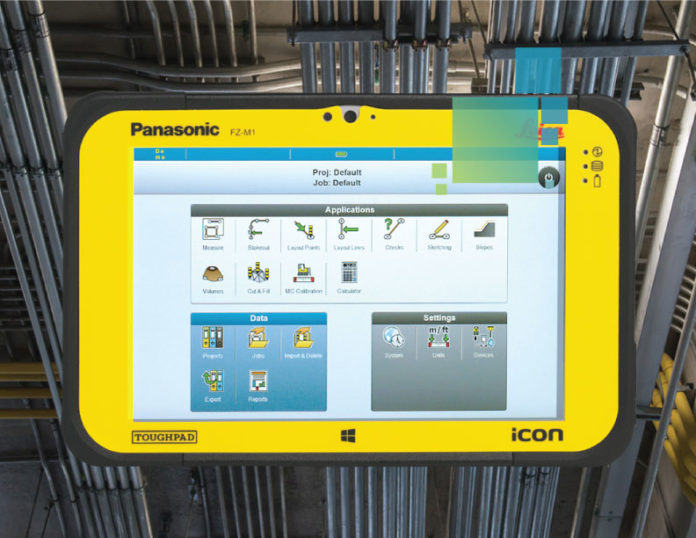Miller Electric Co. is one of the United States’ largest and oldest electric contractors, with more than 1,000 employees performing electrical contracting work in all 50 states. The company focuses on innovation in electrical work, primarily via the use of building information modeling (BIM) and early involvement in the design process.
Miller realized early on that the physical work on project sites also had to evolve. Electricians are used to doing layout with traditional tools like tape measures and string lines, as well as pulling offsets from batter boards and other available references. But traditional layout methods weren’t precise enough when Miller was designing and building large modules offsite using BIM.
“When we model entire electrical systems in 3D, that design process leads directly to 2D build sheets with very precise layout and attachment points,” explains Vice-President of Construction Services Alan Creel. “That lets us design and build much bigger modules that can be craned into place. Basically, if we’re certain we are designing and installing precisely, then we’re able to quickly install much larger coordinated assemblies—we’re getting larger with every project.”
Robotic Total Stations Ensure Accurate Layout
Miller is often the first to install its assemblies, which is another factor dictating more precise surveying. Simply put, many of the references the team would normally use for taping and offsetting—like ductwork installed for HVAC—aren’t available. For underground routing of lines, the team may be working on a nearly bare site. And also because it’s first, Miller has a responsibility to install precisely so that others designing and installing per the BIM (which includes uploaded 3D design work from Miller) will be able to do their work without clashes or rework.
To do layout precisely, using the BIM as a basis, Miller now uses a Leica iCON robot, a robotic total station optimized for the construction industry. It’s an investment the company made in 2016 after trying out robotic total stations from other manufacturers. “The Leica is my favorite,” says Project Coordinator Phil Berania. “The iCON software is very user-friendly and intuitive for layout.”
“Currently, for our layout work, we model conduits, hangers, overhead or underground racks, and then extract precise XYZ coordinates at attachment and layout points,” he says. “Those go into a DXF file that we load into the iCON. And then, once we’re on the project’s coordinate system, we can layout our underground racks in an empty field with no need for string lines or tapes or offsetting. And when we’re working in new construction, we can set out our attachment points for, say, overhead racks even before walls go in. It’s made a big difference in the way we work.”
Digital Layout Reduces Rework
Working with a robotic total station has added another capacity—or even a responsibility—to Miller’s site work. “When we lay out our points of attachment, we’re sometimes in the position of checking other people’s work,” Creel explains. “If they’ve made a mistake—maybe a footer has been set in the wrong place—we can identify that early enough to make a fix before too much work has been done.”
Miller’s crews also perform mid-project as-built surveys as they complete installations. This precise, 3D surveying is then modeled and compared to design work and incorporated into the evolving BIM for use by other stakeholders. “We keep current with our as-builts because we’re no longer installing bits and pieces, we’re installing large modules,” Creel says. “If any deviations or conflicts come up, the as-built is our first point of reference, and that heads off a lot of problems.”
Creel adds, emphatically, “The robotic total station reduces risk for us.”
Ease of Use Increases ROI
For Miller, one additional advantage of the iCON solution is that the ease of use reduces training time and permits more people to make use of the investment. “Early on we didn’t have many people trained to use a robotic total station,” says Creel. “And that was a problem—it’s an investment, and we can’t let that machine just sit on a shelf.” So the firm began training two people on every project where the iCON robot was used. “It can be anyone, from apprentice up to journeyman,” says Creel. “We quickly developed a pool of experienced users who could help out on any project, or even go out on short calls for our service department.”
Long term, Miller is writing courses to include in union certification programs. “We want all our union electricians to have this training, because we think it’s becoming essential to our trade.”






